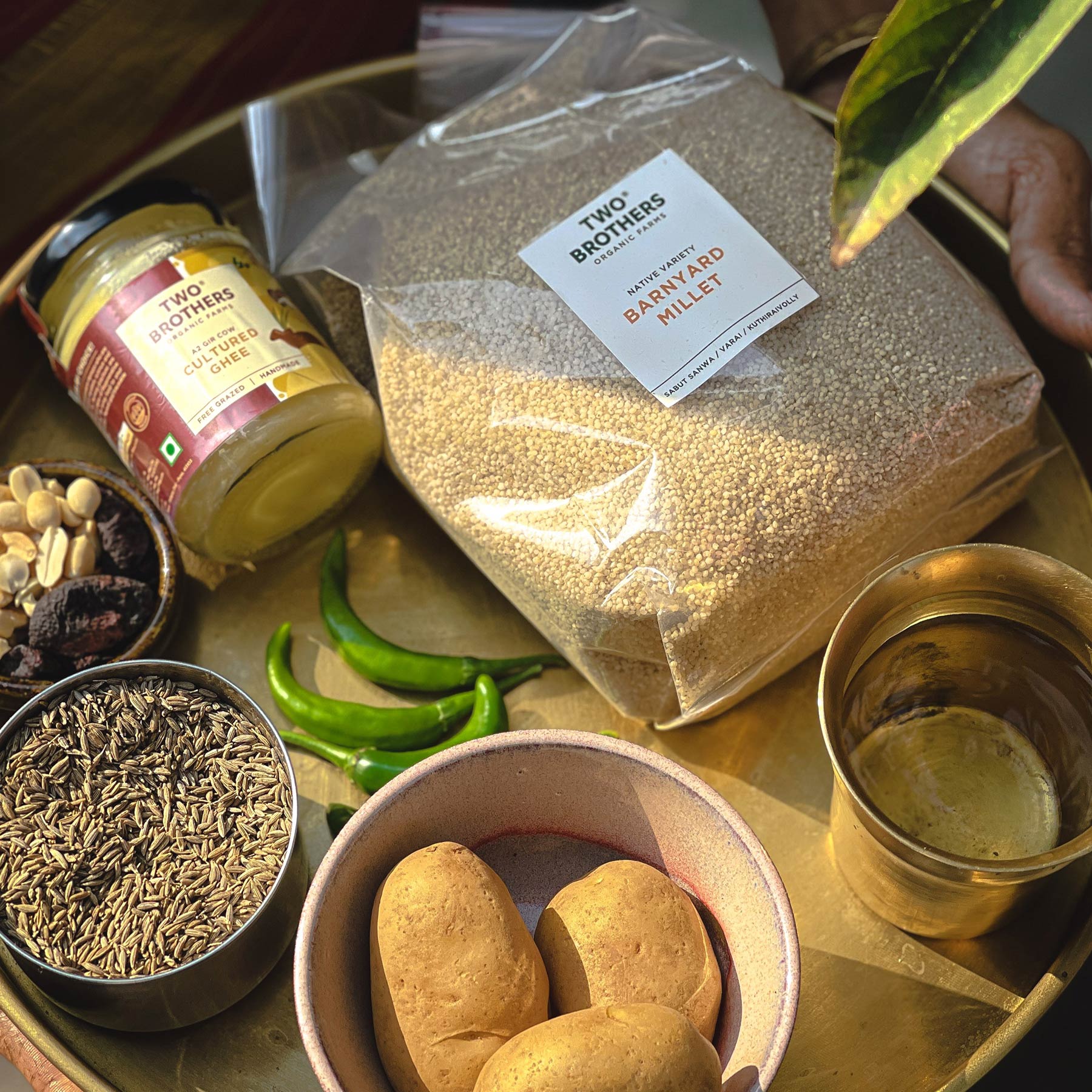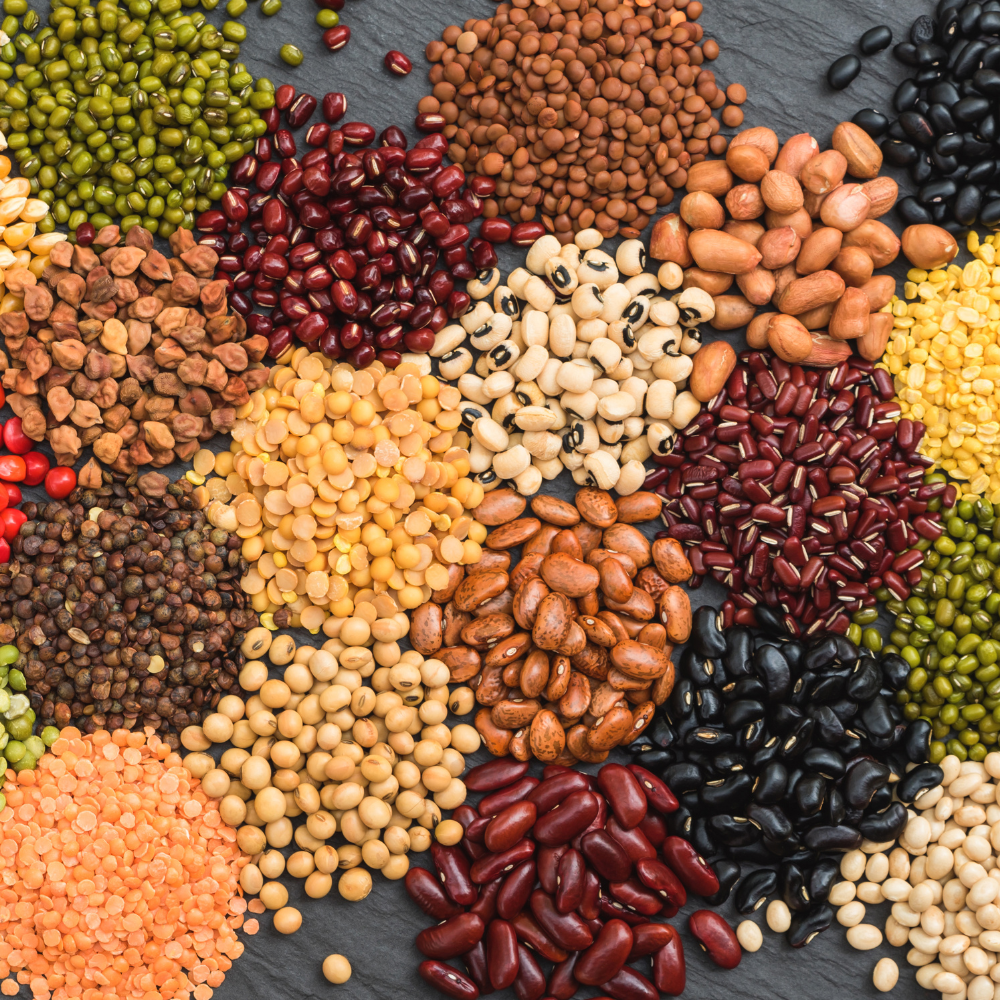Kodo millets – the millet of the Himalayas!
Kodo millet is naturally grown in the Himalayan region and has been an integral part of Northern India’s cuisines for ages.
Being around for 3000 years and constantly evolving, Kodo millet has survived the tough times to emerge as a drought-resistant and pest-resistant hardy crop that requires little to no pesticides/insecticides. It can be grown easily in both the Rabi and Kharif seasons.
Kodo millet health benefits are endless. Its higher iron level helps in anaemia; its high protein and fibre content make it a diabetic-friendly grain; it works as a blood purifier; aids in kidney functions; strengthens the immune system; and makes heart muscles stronger.
That being said, these are just a few Kodo millet benefits. There are more such facts that we will discover in this blog.
Get to know all about Kodo millet here :

|
Table of Contents
|
Get Your Hands on Kodo Millet for its Nutritional Value
Kodo millet, or millet also referred to as "nutria-cereals”, contains a high amount of vitamins, minerals, and phytochemicals containing sulphur. The scientific name for Kodo millet is "Paspalum scrobiculatum.
It is also rich in essential amino acids, like lysine, threonine, isoleucine, valine, and sulphur rich amino acids.
Kodo millets are rich in vitamin B3, vitamin B6, and folic acid, as well as minerals, such as calcium, potassium, magnesium and zinc.
Let’s see the general nutritional components of Kodo millet below.
|
Nutritional Components of Kodo Millet |
|
|
Nutrients |
Quantity (100gm) |
|
Protein |
10.6 gm |
|
Fat |
4.2 gm |
|
Fibre |
10.2 gm |
|
Ash |
2.95 gm |
|
Calorific value |
346 kcal |
|
Carbohydrate |
59.2 gm |
|
Minerals |
4.4 gm |
|
Calcium |
27 mg |
|
Phosphorus |
188 mg |
|
Iron |
0.5 mg |
|
Riboflavin |
0.09 mg |
|
Niacin |
2.0 mg |
Source: Nutritional, Functional Role of Kodo Millet and its Processing: A Review
Let’s learn about the Kodo millet health benefits now.
Don’t Miss Out on These 6 Kodo Millet Health Benefits
Kodo millet is one of the five positive millets. It is considered a powerhouse of nutrition that helps maintain a healthy life. Here are 6 Kodo millet health benefits that will encourage you to use this millet on a regular basis.
Kodo Millet Benefits the Kidney
Kodo millet is helpful in kidney disorders due to its lower levels of potassium, higher levels of fibre, and lesser uric acid formation. The antioxidants and flavonoids in Kodo millet help in blood purification and prevent stone formation in the gall bladder and kidney.
Kodo Millet Benefits the Heart
Kodo millet contains phytochemicals such as phytic acid, which lowers cholesterol, and phytate, which is linked to lower cancer risk. The presence of potassium, magnesium, and prebiotic fibre in Kodo millet prevents heart attacks, atherosclerosis, and other chronic diseases.
Source: Role of Kodo millets in CVD
Kodo Millet Benefits in Diabetes
Kodo millet is good for diabetes .Kodo millets are low in sugar content and have polyphenols. Both of these help reduce blood glucose levels. A study conducted in 2022 by Han et al. states that Kodo millets help control type 2 diabetes.
It has also been found in a study that Kodo-dependent dishes like Kodo idly and upma have a 60% lower glycemic index, making them an ideal substitute for cooking diabetic-friendly dishes.
Kodo Millet Benefits in Weight Loss
Research has shown that Kodo millets have a higher polyphenol content, which prevents obesity. It is also helpful in preventing weight gain, reducing fat deposition in adipose tissue, and reducing inflammation. Being on the lower side of the Glycemic index and high in fibre, also works in favour of weight management.
Kodo Millet Keeps the Gut Healthy
The high fibre content in Kodo millets aids in the elimination of diseases such as constipation, excessive gas, bloating, and cramps. It helps in the growth of healthy bacteria, which are essential for proper digestion.
Kodo Millet Benefits also include Anti-ageing and Healing Properties
The presence of antioxidants and polyphenols in Kodo millets helps fight free radicals and has cell repair functions. Using Kodo millet flour paste on cuts and wounds is a traditional remedy to heal them.
The Right Method of Using Kodo Millet to Boost Nutrition
Most people make this silly mistake every time they soak Kodo millet. It is important to understand that Kodo millet is rich in water-soluble minerals. When soaked in water, it diffuses in the water, and as a result, the water turns red or muddy.
The big mistake people make is to rinse and wash Kodo millet several times to get rid of the colour. Another mistake is to throw away the red or muddy water; with it, the minerals and antioxidants are also lost.
Here’s how to clean and soak Kodo millet for better nutrition and health benefits.
- First, rinse Kodo millet in plain water to remove any grit and dust.
- Second, soak the Kodo millet in drinkable water for 6 to 8 hours.
- Third, don’t throw away the millet water; use it in cooking.
In this way, you will enjoy nutrient-rich Kodo millet.
Now that we have covered how to correctly use millets, it's time to dive into some recipes to reap the Kodo millet benefits.
Easy Kodo Millet Recipes to Get You Started!
We have brought together 3 simple and easy Kodo millet recipes here and have purposefully ignored the fancy ones. Why?
Try out these simple recipes, and you will know how delicious Kodo millet can be on its own. Curious? Let’s begin!
Kodo Millet Kheer - A guilt-free delight!

Why not start with a dessert? It’s time to embrace the creaminess of Kheer without the agony of fat and calorie intake. Kodo millet kheer is all you need to silence the cravings for dessert after lunches and dinners. Here’s what you need:
Ingredients for Kodo Millet Kheer
- Milk (dairy or coconut/almond milk)
- Dehusked Kodo millet ⅓ cup
- Sweetener (stevia, dates puree, coconut sugar)
- Cardamom powder ¼ tsp or 3 to 4 pods
- Sliced Dry fruits of your choice
Instructions to cook Kodo Millet Kheer
- Soak Kodo millet after rinsing it for a minimum of 30 minutes in warm water.
- Take a heavy-bottomed pan and pour the milk of your choice. Let it simmer on low flame till it starts reducing or thickening.
- Add the drained Kodo millet to the boiling milk and let it cook completely. Also, add cardamom and stir at regular intervals to avoid kheer burning at the bottom.
- When Kodo is completely cooked, add your choice of sweetener and mix well.
- You can add water or milk to adjust its consistency to your liking. Let it cool, and top it with sliced dry fruits as a garnish before serving.
Kodo Millet Upma – One Breakfast For All !

Kodo millet upma can be cooked any day and every day. It is suitable for everyone, from kids to adults. The recipe is the same as the traditional upma recipe, except you have to replace suji with Kodo millet. Here’s a quick recipe for you.
- In a pan, heat oil and prepare your usual upma tempering with peanuts, curry leaves, green chillies, rai, onion, and ginger. Add any chopped vegetables to add crunch and saute them.
- Then, add soaked Kodo millet and water. Cook for another 10 minutes, or till the water has evaporated. Add peanuts and give it a gentle mix.
- Top it with chopped coriander and serve hot.
That’s all there is to Kodo millet upma. You can cook pulao in a similar way. Let's see how?
Kodo Millet Pulao: A Solution for Your High-Protein Gluten-free Meals.

Kodo millet pulao is an alternative to rice pulao. But it is more delicious and healthy. The best thing is that you can experiment with the flavour you like and customise it to your taste. The cooking method is exactly similar to any rice pulao cooked in a pressure cooker.
- First, soak the rinsed millet in water for 30 to 40 minutes.
- Take a pressure cooker, heat it, and pour oil into it. Add the regular pulao spices, bay leaf, cumin, cinnamon, red chilli, and green chilli.
- Then, add chopped onions and saute them till translucent. Add ginger garlic paste and saute till the raw aroma goes away.
- Next, is to saute the chopped veggies of your choice for 2 to 3 minutes. Then, add turmeric, coriander powder, and garam masala. Sprinkle a little water to avoid the burning of masala.
- Now, transfer the millet to the cooker, and pour in the required amount of soaked water. Cook it for two whistles.
- Garnish it with coriander and serve it with raita.
These simple recipes can be prepared with simple ingredients. It’s a well-known fact that simple food is the most comforting. Moreover, you get to relish the Kodo millet benefits in the easiest way possible.
FAQS: Kodo Millet - Benefits, Nutrition, Uses, and More
What is Kodo millet called in India?
Kodo millet has several names, like finger millet, cow grass, rice grass, ditch millet, Native Paspalum, or Indian Crown Grass. In Hindi, it's called Kodo dhana, Varagu in Tamil, Arikalu in Telugu, Harka in Kannada, and Kodro in Gujarat.
Are Kodo and Ragi same?
No, Kodo and Ragi are two different types of millet. Both are rich sources of nutrients and are considered superfoods. Ragi and Kodo millet benefits are also similar, one can include both of them in their diet for variation in taste and nutrition.
Can we eat Kodo millet daily?
Yes, you can eat Kodo on a regular basis, but in moderation. Include other grains in your meals as well to create a balanced nutrition ratio from a variety of foods.
Who should not eat millet?
People who suffer from hypothyroidism should not consume millet.
Is Kodo millet difficult to digest?
Kodo millet is high in fibre, rich in soluble minerals, and gluten-free. Thus, it is easily digestible. Kodo millet benefits heart, liver, kidney, and gut health immensely due to the presence of fibre, iron, protein, and low phosphorus.
How long should we soak Kodo millet?
Kodo millet benefits more when it is soaked for 6 to 8 hours. The phytic acid in Kodo millet is released into water, which inhibits the fast absorption of nutrients. Hence, soaking is important! However, if you're in a hurry, you can still soak the millet in warm water for at least 30 to 40 minutes.
What do we call kodo millet in english?
Kodo millet is known by the same name in English—Kodo millet.
What are some other kodo millet uses?
Kodo millet may be used to make dosas, idlis, and even salads, making it a versatile and healthful ingredient in a variety of recipes.
Can we make millet roti?
Yes, you can make roti using millets like bajra, ragi, or jowar, providing a gluten-free and nutritious alternative.
What is the Kodo Millet nutritional value?
Kodo Millet is a nutrient powerhouse, rich in fibre, protein, and essential minerals like iron and calcium. It's a gluten-free grain with low fat content, making it a healthy choice for a balanced diet.
What are the Kodo Rice benefits ?
Kodo Rice offers numerous advantages, including improved digestion, sustained energy release, and support for cardiovascular health. Its low glycemic index makes it a great option for maintaining stable blood sugar levels.
How Does Kodo Millet Benefits For Weight Loss?
Kodo Millet aids in weight loss due to its high fibre content, promoting a feeling of fullness and reducing overeating. It also has a lower calorie count compared to traditional grains like rice, making it beneficial for weight management.
What Is The Importance Of Kodo Millet In A Diet?
Kodo Millet is important for its nutritional density, offering a wide range of essential nutrients. It supports overall health, provides sustainable energy, and is a versatile ingredient suitable for various culinary applications.
Are there any kodo millet side effects after consuming ?
Generally, Kodo Millet is well-tolerated, but excessive consumption may lead to potential digestive issues for some individuals. It is advisable to introduce it gradually into your diet to monitor any adverse reactions. Always consult with a healthcare professional for personalised advice.
What are the benefits of kodo millet for babies?
Kodo millet is rich in nutrients like fiber, vitamins, and minerals. It is easy to digest and can help in maintaining a healthy digestive system in babies.
Is kodo millet gluten free ?
Yes, kodo millet is gluten-free, making it a suitable choice for those with gluten intolerance or celiac disease. It is a nutritious grain alternative that can be incorporated into gluten-free diets without any concerns about gluten-related reactions.
What are the cooked kodo millet nutrition facts ?
Cooked kodo millet is a low-calorie food with about 119 calories per 100-gram serving. It's rich in carbohydrates (25.2g) and provides small amounts of protein (3.2g), fat (0.5g), and various minerals and vitamins.
Conclusion
Kodo millet is an ancient grain jam-packed with nutrients. It’s good for health and helps in recovery from several diseases, from allergies to diabetes; from fighting high cholesterol to managing postmenopausal symptoms, Kodo millet health benefits for everyone!
Don’t forget to soak first to enjoy most of the Kodo millet benefits.
Easy to digest with ample nutrients Kodo millet benefits not just humans but the environment too. To buy organic Kodo millet, head to the Two Brothers Organic Farm’s online store right away!
Read more :
All about Barnyard Millet - Benefits, Nutrition, Uses, and More
A Quick Guide to Finger Millet - Benefits, Nutritional Values, Recipes, and More










